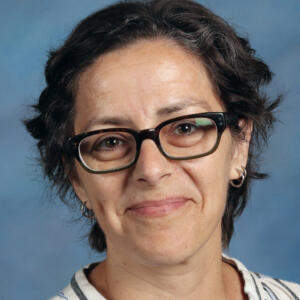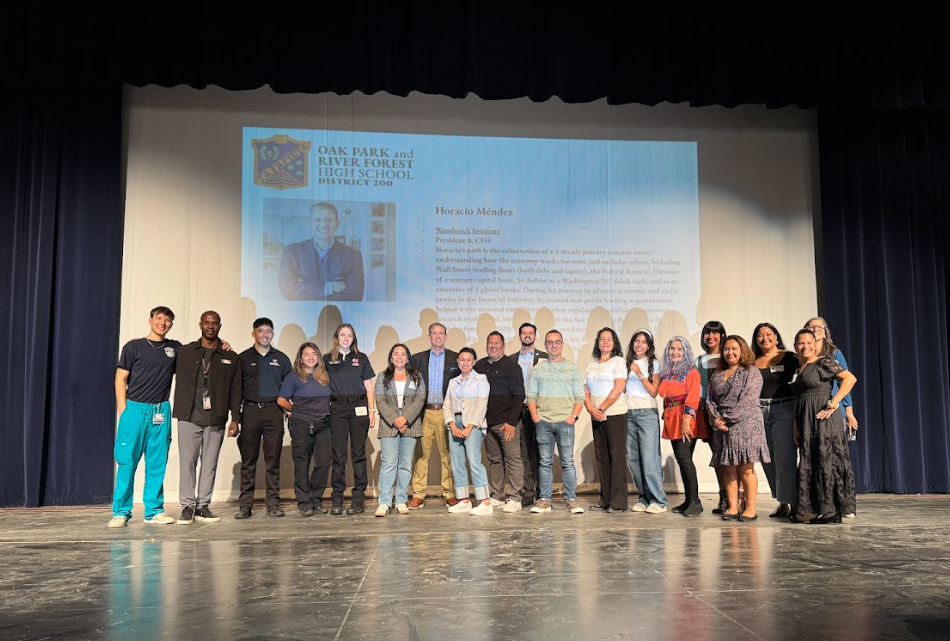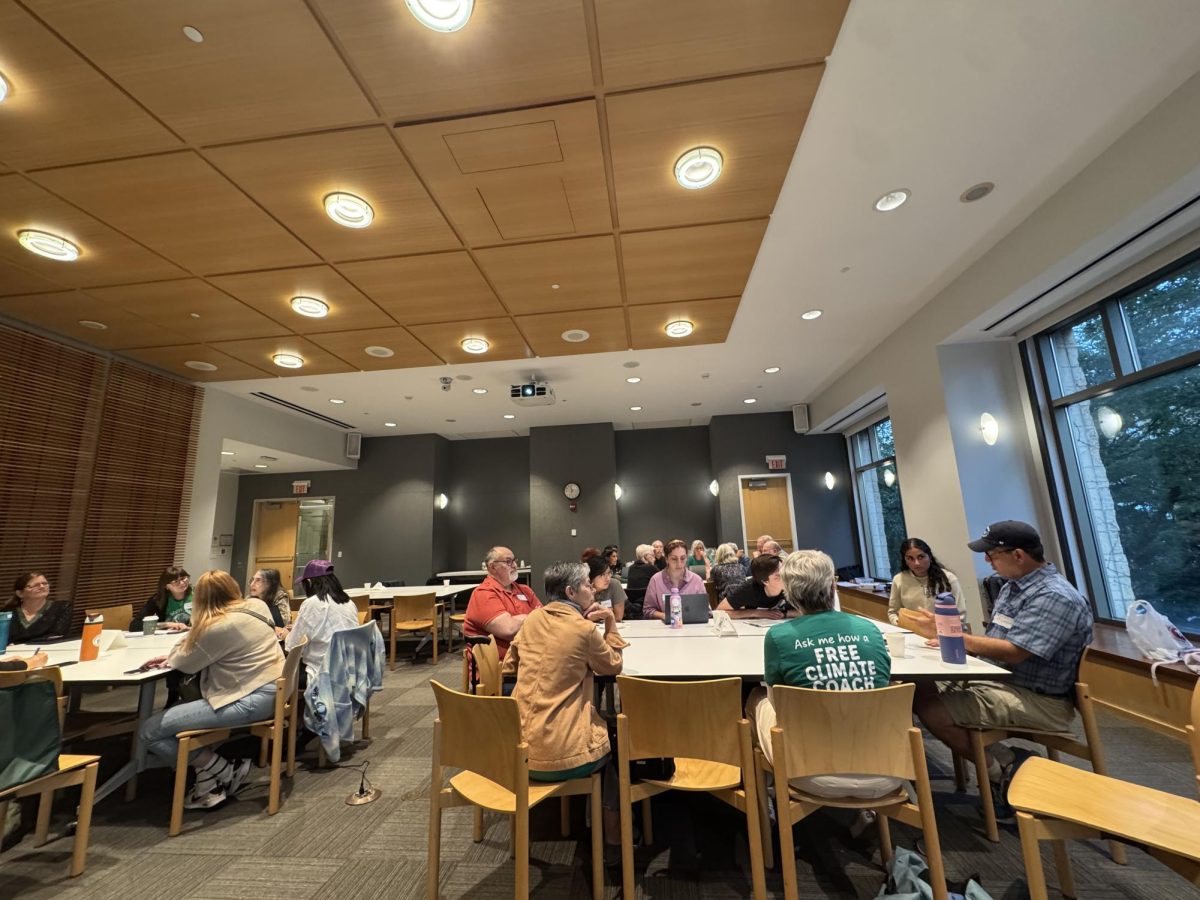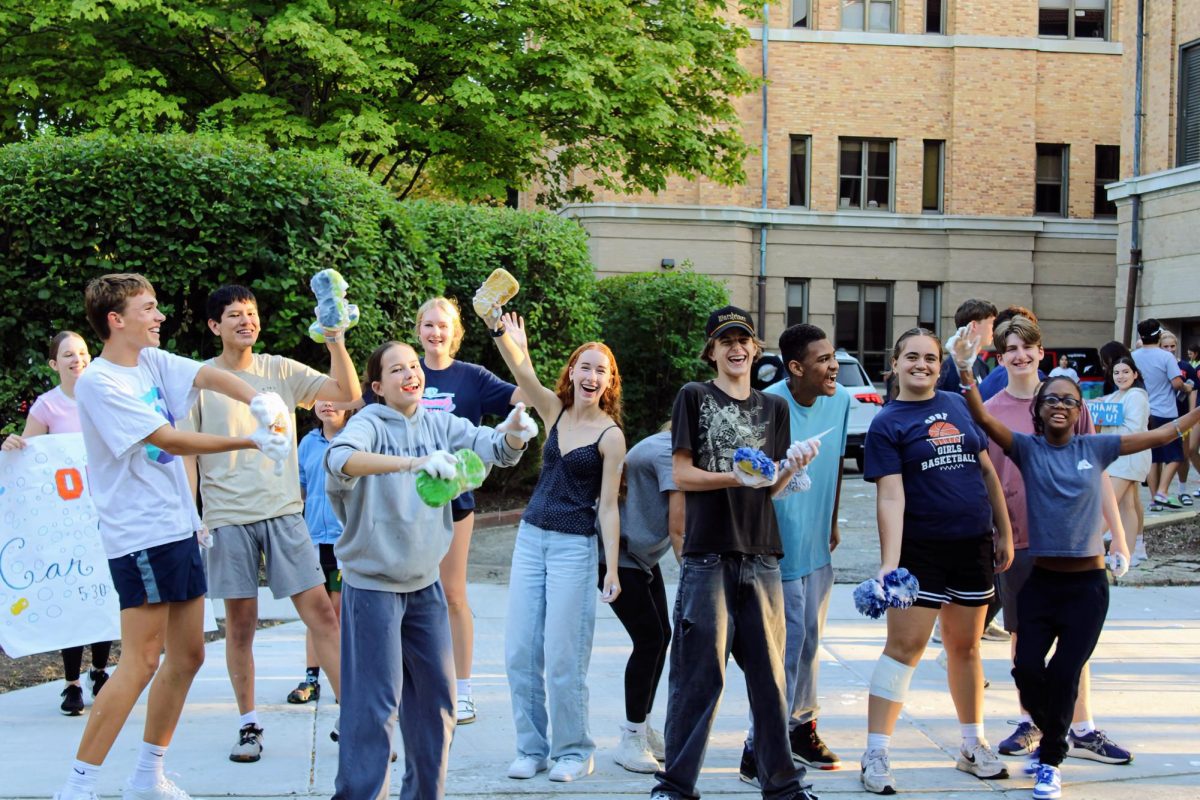The first few steps into Annamaria Carparelli’s Italian classroom show a beautiful chaos: the walls are plastered with posters, vocabulary, maps and art of Italy and its culture. The wall opposite the door is occupied by a large window facing North Scoville Avenue, with its light shining onto the Italian flag draped against the window frame. This classroom, marked by the number 4165 outside its door, is where Carparelli displays her years of teaching Italian and conveys the importance of teaching world language in schools.
Carparelli did not initially plan to become an Italian teacher. When she started college, she majored in film and only took Italian for fun. She decided to switch majors to Italian after an Italian literature course on Luigi Pirandello, where she “fell in love with the whole concept.” The Italian that Carparelli learned in school, however, was in addition to what she knew from her own background and culture.
Carparelli’s family, which included her grandparents and parents, moved to the United States from Italy before she was born. Carparelli had learned Italian throughout her childhood as her grandparents, two solely Italian speakers, raised her and taught her the Sicilian dialect of the language.
Being raised knowing only a specific dialect of a foreign language made Carparelli’s early education difficult. While she did know some English, Carparelli spent most of her time speaking Italian, so she faced issues speaking in school. She also struggled later on while in college, where she had to learn standard Italian after switching majors for teaching purposes.

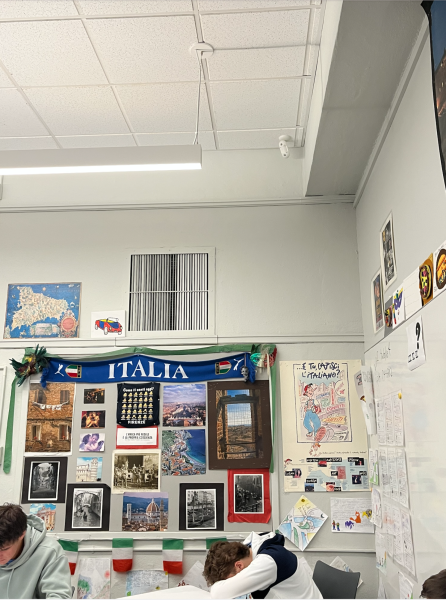
However, the hardships Carparelli faced by speaking Italian as her first language inform the way she teaches her students today. “It allows for more of an empathetic nature,” said Carparelli. “It allowed me to understand you guys more.”
Carparelli started her teaching career as a paraprofessional, where she taught individual students the Italian language. She did this until she began teaching high school students.
Carparelli’s goal throughout her teaching career has not just been to instill Italian into her students’ minds, but the culture and love behind it as well. “My hope is that [my students] not only learned a language that wasn’t native to them…but got a love for and appreciation for Italian culture, and I’m hoping its a catalyst for them to go and experience it,” she said. “I’m trying to help you expand your mind, expand your cultural understanding.”
Carparelli doesn’t follow traditional classroom roles, where the teacher lectures and their students listen, her students said. She focuses on making her classroom a community and forming her students into a family.
“The way she interacts with us, she doesn’t really treat us like we’re below her as students,” said Evan D’Agostino, a senior in Carparelli’s 4A class. “She talks to us like we’re like her peers… she’ll have engaging conversations about things we are interested in.”
“She often encourages my hobbies and other academics,” D’Agostino added. “She knows I play guitar, and she always encourages that. She likes watching videos of me doing that. She encourages stuff I like.”
Many of the students in Carparelli’s class feel a sense of community, including Noah Hardy, a junior in Carparelli’s 4A class, who said, “Italian has made me grow into a community with the class. I’ve made friends with a ton of people.”
As she is nearing the end of her teaching career, Carparelli hopes to retire soon, but she does not believe retirement to be the end of her time spreading Italian culture. “I would love to continue something with Italian,” she said. “I still want to share the love I feel for the country and the language and the culture.”
No matter what route Carparelli decides to take after retirement, the effects of teaching Italian will remain at both OPRF and in her actions and beliefs for many years to come. “I had no idea how my students were going to impact me,” she said. ”One of the things that sort of surprised me as my career went along is how much you guys have taught me.”

